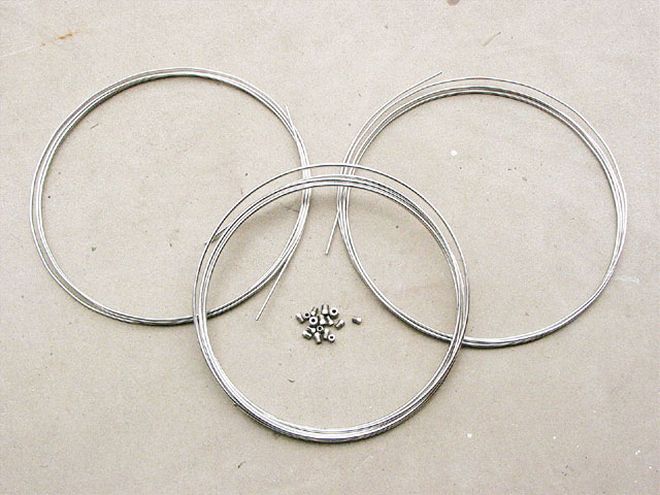

Plumbing a street rod can be a time-consuming and sometimes aggravating chore. A large portion of that aggravation comes into play when re-plumbing an assembled vehicle versus plumbing a nice clean rolling chassis. That said, no matter what you're working on, you want to do it right and you want to do it once.
Doing it right, and once, has been made a heck of a lot easier on us all over the last decade or so thanks to the emergence of a handful of companies that manufacture components and complete brake line component kits for just about anything with wheels. These guys all know their stuff and offer you your choice of bulk supplies, fittings, and tools, as well as pre-formed brake line kits made to slide right into place-an offering that's saved countless hours, busted knuckles, and wasted brake line over the years.
Another bonus is the availability of all these brake components in stainless steel versus the OEM tin-coated steel used from the factory. Stainless, in street rodding anyway, offers not only a lifetime of hassle-free service but good looks as well. The smooth shiny appearance of stainless lasts nearly indefinitely, making it the obvious choice for a street rod, custom car, or classic truck.
Stainless steel is the generic term for grades of steel that contain more than 10 percent chromium, with or without nickel, molybdenum, titanium, niobium, and/or other elements. Stainless steel's most important benefit is that it resists corrosion, maintains its strength at high temperatures, and is easily maintained. The chromium in the steel combines with oxygen in the atmosphere to form a thin, invisible layer of chrome-containing oxide that keeps it looking fresh and shiny, even when exposed to the elements.
The pre-bent kits are obviously the easiest answer for a stainless upgrade. The hard work has been accomplished for us by these aftermarket companies in a factory environment, often with the use of CNC machinery doing precise bending and flaring of the tubing. The street rodder building a car from scratch faces a bit more of a challenge than the R&R tasks afforded by pre-bent assemblies, as most cars built by the homebuilder are unique relative to production line-built vehicles. There in lies the rub. Working with stainless is a bit more of a challenge than OEM-style tin-coated steel, as it is a much harder material.
Stainless brake line is relatively easy to bend and shape, though it is tougher than plain old tin-coated steel line, but the extra bit of effort comes to the forefront once the flaring process is at hand. It is at this point where quality tools make or break the situation. Fortunately, the suppliers referenced here also offer quality-forming tools as well as bulk stainless brake line that has been annealed to aid do-it-yourselfers like us.
Annealing is a heat treatment wherein the microstructure of a material is altered, causing changes in its properties such as strength and hardness. It's a process that produces stable conditions by heating and maintaining it at a suitable temperature, and then cooling it very slowly. It's used to induce softness, relieve internal stresses, refine the structure, and improve cold working properties, which makes the flaring process nearly as easy as that for tin-coated steel. That said, there are a few important factors and perhaps fallacies to be addressed when contemplating the use of stainless brake lines.
The two most common falsehoods that I'm aware of are: You can't double flare stainless, and stainless lines are more prone to leaking than standard steel lines. The first example is usually followed by the qualifier that with stainless you have to use a 37-degree flare and AN fittings. In my personal experience, bulk rolls of annealed stainless double flares to 45 degrees just fine with the average flaring tools most have on hand, and non-annealed stainless double flares just as well with the use of high-quality, heavy-duty equipment. In other words, most stainless flaring horrors are experienced by those trying to flare stainless with a $15 tool from the local home improvement store versus a quality tool designed for the rigors of stainless. Any of the suppliers listed in the following source box not only offer the stainless line and everything that goes with it, but the correct tools for working with it as well.
As far as stainless leaking more often than tin-coated steel, both materials seat in the same manner. The tubing material isn't what causes the line not to seat; the problem is that, most of the time, you are reusing a master or wheel cylinder and the seat in the used component has a seat ring (indentation) from the old line. When reusing old components with new lines, either stainless or OEM steel, a good seat or seal is accomplished by loosening the line slightly and retightening it several times. This allows the two materials to re-form together and create a strong leak-free connection.
So, keep in mind that stainless is the way to go when it comes to good-looking, long-lasting street rod brake lines. It just requires the use of the correct tools and the offerings from a variety of great aftermarket suppliers.